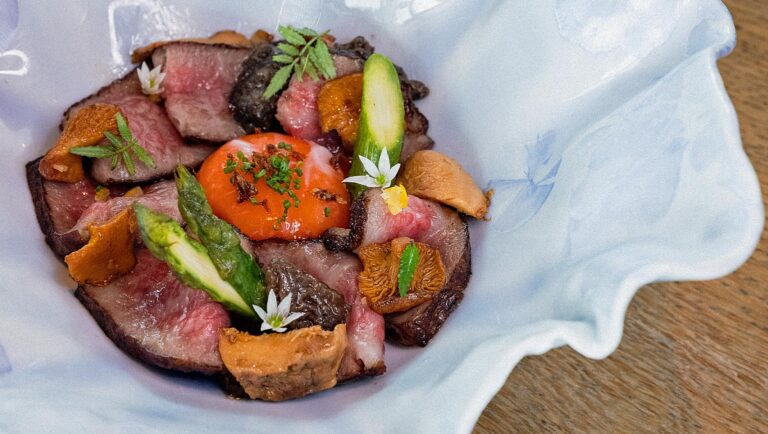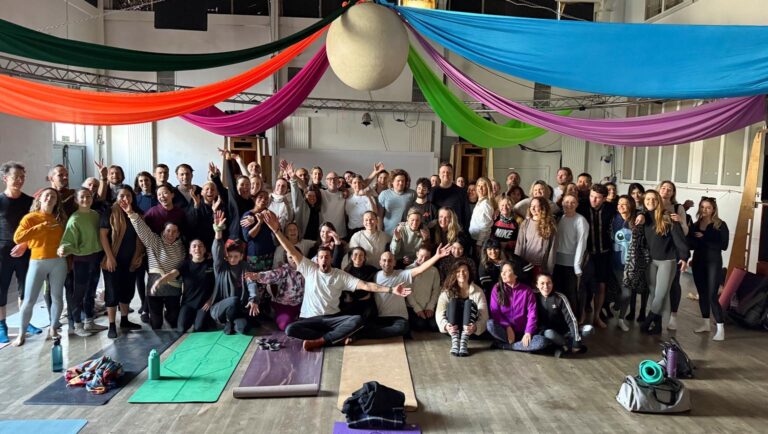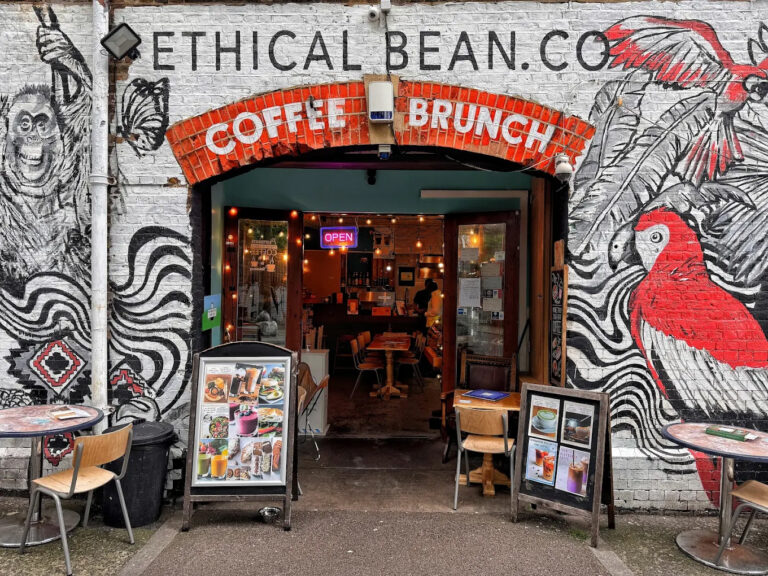
Review: Kokin – tuna meets fire at The Stratford
The new sushi restaurant now at the iconic skyscraper’s 7th floor and terrace
Bow was my dance cradle, where I was born and bred as the youngest of six children, who could all dance. My Grenadian parents danced to calypso music, so I danced before I was even born – to the rhythm of my mum’s heartbeat. My brother was a well-known club dancer in his day, nicknamed Chopper, because of his big toothy grin. As a child, I’d watch him in the bedroom jamming to jazz funk music and I was awestruck. I loved the way he used his bandana, not only to wipe the sweat from his brow, but also as a prop to dance with.
East London has a strong club dance history. From the late 70s, a style known as ‘boogie’ dominated the dance floors of the jazz funk and soul scene. The legendary TORSO; featuring Bow brothers Bassey and Norman Walker, Oiley, Mohammed Yermak amongst others, were a major part of this, and one of the first dance groups of this generation to be immortalised on film. Another East London dance group, Unknown Kwantity, appeared in videos by David Grant and Jaki Graham, featuring Lesley Michel and Vin Murray. These local stars were a major part of my upbringing as they were cool, so slick, and really represented the club dance scene at the time.
Once I was old enough to leave the house on my own, it was hip hop culture that really grabbed me. My brother Tim introduced me to music by The Sugar Hill Gang, and the Soul Sonic Force. I felt like breaking and popping belonged to me. It was created by, and for, the children. As a 13-year-old, watching kids that looked like me on TV spinning on their backs, head-spinning in fat laced pumas, I remember thinking ‘this ain’t for adults’! They were fearless – particularly to do that on concrete. More than just a dance, breaking was also a weapon that we used to defeat opponents that was always better than using knives. As a crew of b-boys, we were able to navigate through rival territories, avoiding violent beef between actual roadmen. I felt lucky to be a dancer; it was like a shield.
Pervez, the globally known old skool b-boy, has been training in the Stratford shopping centre since back in the day in 1983, when things were extremely territorial. Getting into these circles (pun intended) wasn’t straightforward. Not everyone was welcome. I guess when sharpening tools you have to be careful they’re not used against you. Pervez is still training there nearly 40 years on. But Covent Garden was the nucleus of London hip hop culture in the early 80s, where we’d travel from East London to link other hip hoppers from different parts of the capital, the UK and the world. I saw people like the late Sipho, an amazing b-boy and beatboxer from East London and an original member of rap group the London Posse.
The West End club scene was popping off and we’d party hard in places like the Opera House, Babylon and Too Dam Funky at the Wag Club. There wasn’t much boogie in East London at the time, as clubs like Shenola’s were more reggae, lovers’ rock and rare groove. Over the last 20 years, west central London has become proper dry, its character has drowned in corporate labels, but during that time the culture has been flourishing back East. Shoreditch is chic, with its little artisan pop-up shops and the most gorgeous graffiti. These characteristics keep flowing along the canal, up to Hackney Wick and into The Olympic Park and the East Bank.
I’m so excited about the fact we’re opening a Hip Hop Theatre Academy in Queen Elizabeth Olympic Park at Sadler’s Wells’ new space there – Sadler’s Wells East. I would’ve loved to have a space like this when I was a hungry 16-year-old. A space to devote all my time and energy on being the best dancer, emcee, actor, theatre-maker I could be. East London has always been a hotbed of talent, from TORSO to Boy Blue Entertainment, and now here’s a building and a program designed to nurture and develop creative hip hop skills, right on our doorstep. A space that’s open, transparent and inviting, where dance can live as a pastime, a passion and a profession. Where community and excellence are exactly the same thing. Breaking is now an Olympic sport. The HHTA will collaborate with Breaking GB to deliver Olympiad training sessions, program battle events in Sadlers Wells East, and for our students to have access to world class dance athletes.
I often worry about why a culture that developed outside institution needs an institution? How will we hold onto what’s important about hip hop, while discovering new ideas? In our increasingly polarised world, where concepts like social distance have become normalised, we crucially need the arts. Hip hop was born out of the spirit of conflict resolution, to find a peaceful answer to gang warfare in the Bronx. We need hip hop dance now more than ever, especially in East.
GUEST EDITOR, Jonzi D
Jonzi D has been the UK’s leading advocate for hip hop dance and theatre for more than two decades. He founded Breakin’ Convention in 2004 as an annual event to celebrate the art form. It now supports the professional development of hundreds of hip hop dance and rap/poetry artists across the country. He is an Associate Artist at Sadler’s Wells, responsible for bringing a permanent home for hip hop training and performance to the Olympic Park.

The new sushi restaurant now at the iconic skyscraper’s 7th floor and terrace

Exploring the health advantages of belonging to something bigger than ourselves

Your timely reminder to go visit these amazing restaurants, bars and cafes this summer while we wait for better bridge access…
A joint venture in collaborative local media from:


In partnership with

Regulated by IMRESSS, the Independent Monitor for the Press CIC.
For more info on our complaints policy, or to make a complaint, visit FAQ.
